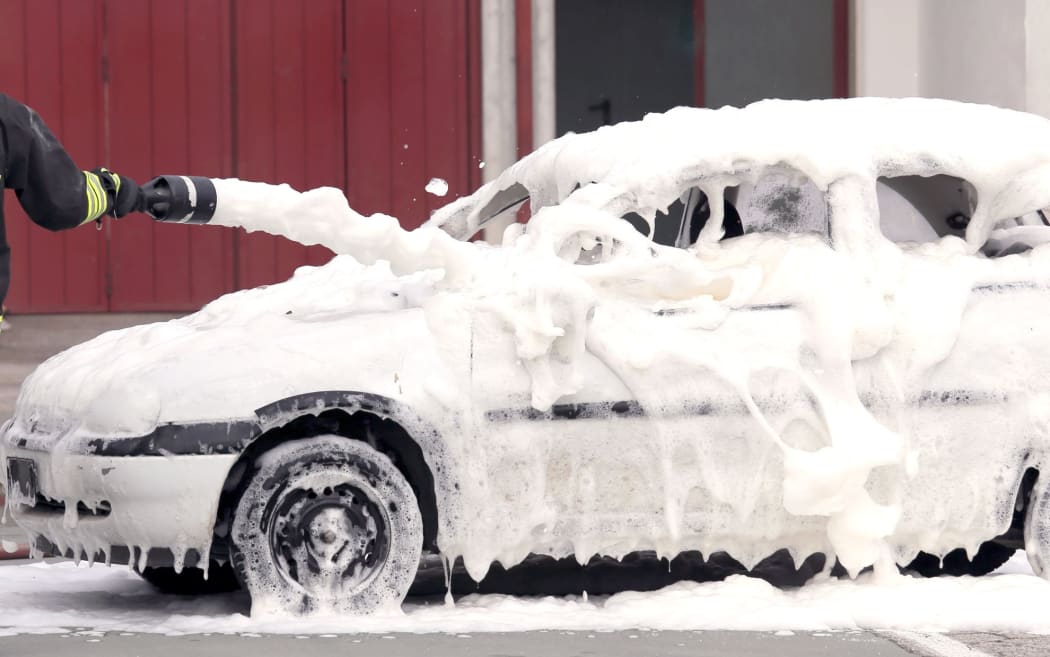Airports face big bills to get rid of banned firefighting foam but officials are promising tight monitoring to make sure no one dumps any to avoid the costs.

Firefighting foam (file photo) Photo: 123RF
The system of checks to date, though, has been such that airports say they never knew about a ban on the foams brought in 12 years ago.
"We've been tracking in a general sort of way the experience at airports in Australia but the airports here, to the best of our knowledge, were unaware of the regulatory underpinning affecting this family of [PFAS] chemicals," the Airports Association chief executive Kevin Ward said.
"That became more obvious towards the end of last year when the EPA [Environmental Protection Authority] was specifically tracking down the material.
"We haven't tried to go back and find out who knew what, or who said what to who, we're more focused on fixing the problem now."
The problem centres on how to safely get rid of the banned foams.
A copy of the Environmental Protection Authority's new disposal guidelines has now been leaked to RNZ.
They show the foam must be exported as New Zealand has nowhere that can handle these longlasting, manmade toxic chemicals, which have triggered a nationwide investigation after contaminating soil and water around Defence bases.
On-site checks would be made in case anyone tried to dump or dilute the foam to avoid the high cost of export, the authority said.
"People could do it but it is illegal," said Fiona Thomson-Carter, general manager of Hazardous Substances and New Organisms.
"We have a hazardous substances compliance team and they'll be asking questions and making sure the correct disposal plan is being followed."
The EPA plan is almost entirely focused on just one of the two banned chemicals, called PFOS, and not PFOA, though this latter chemical was classified a possible carcinogen in 2014 and in some countries is regarded as more risky for health and the environment than PFOS.
PFOS foam has so far been found at four small airports.
Other airports had PFOA foam, but Mr Ward said he did not know which ones or how much.
Auckland and Wellington airports both told RNZ in December they had stocks of banned foam.
The EPA declined to update RNZ on its ongoing investigation into these larger airports.
PFOS was the target for now because it was the only one regulated under an international convention of persistent organic pollutants, Dr Thomson-Carter said.
If a business had PFOA foam, it would trigger a compliance notice "eventually".
"We will also be focusing more on PFOA an other chemicals in the future as international knowledge ... increases and presumably more will become banned under the Stockholm Convention eventually."
The authority had no estimate on how much foam might be at airports or other industries, like oil tank farms, or on how much disposal might cost.
"No, we're really drawing on the Australian information because they're much further advanced."
It has cost Victoria about a million dollars to decontaminate 80 firetrucks, while Airservices Australia earlier chose to replace many firetrucks.
Many newer foams still in use in New Zealand contain troublesome fluorines, including some that degrade into PFOA over time.
New Zealand airports were now looking to move to fluorine-free foams, Mr Ward said.
This is ironic, as most Australian airports did this years ago, however New Zealand moved more quickly to align itself with the Stockholm convention on PFOS than Australia did.


